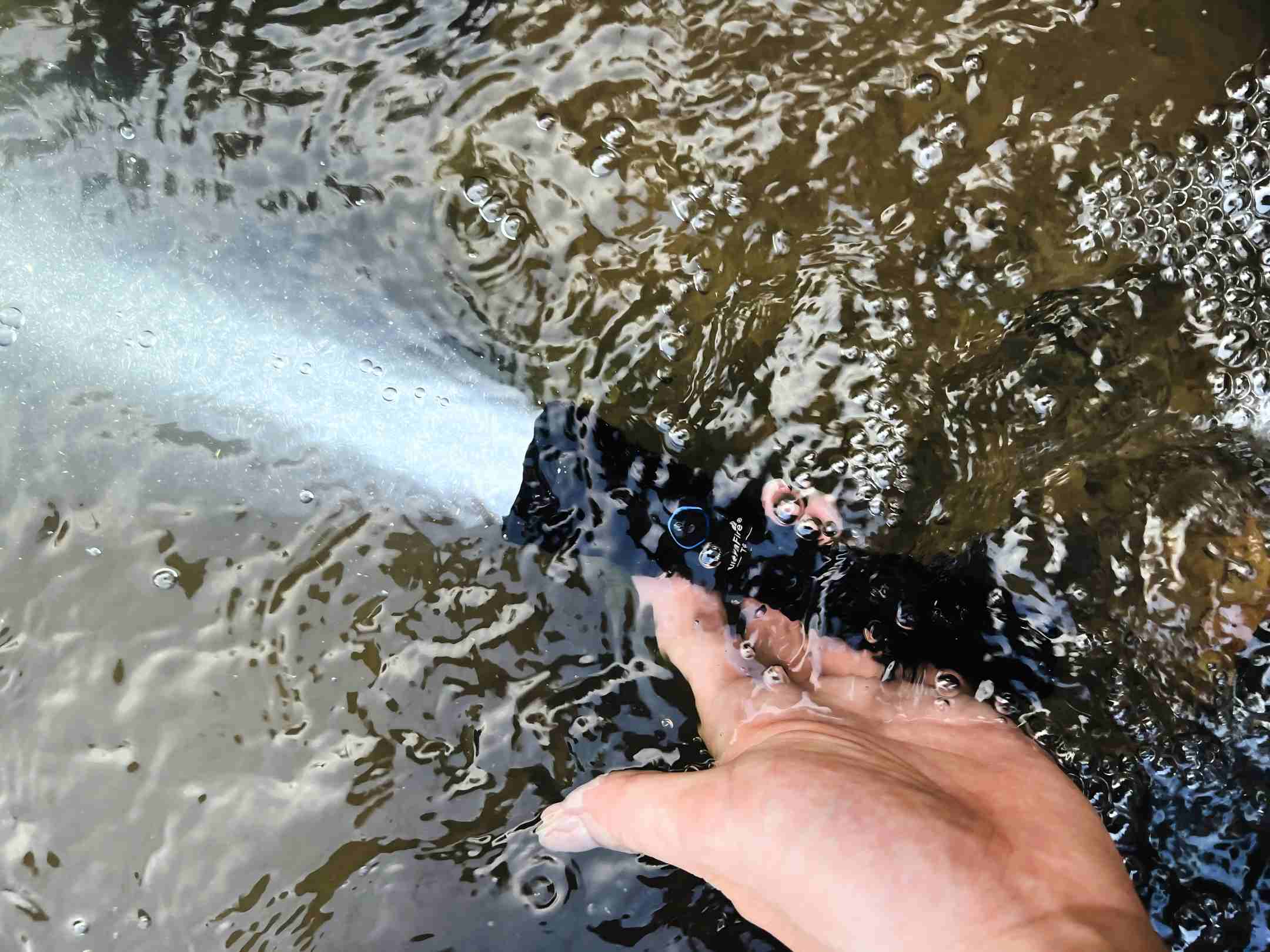Battery Drain: Self‑Discharge vs Parasitic Drain
Two processes cause a battery’s energy to disappear over time.
-
Self‑discharge: Every lithium‑ion cell slowly loses its charge through chemical reactions in the electrolyte. Technical reviews estimate that lithium‑ion batteries such as 18650 cells typically lose 0.5–3 % of their charge per month under normal conditions. This leakage increases with temperature — the self‑discharge rate roughly doubles for every 10 °C rise in temperature. A fully charged lithium‑ion cell may therefore lose 5–10 % of its charge in the first month and continue dropping until equilibrium is reached. Self‑discharge is inherent to the chemistry and cannot be eliminated, but it can be reduced by using high‑quality cells and storing them in a cool, dry place.
-
Parasitic drain: Many modern flashlights use electronic switches, regulators and indicator LEDs that draw a small standby current even when the light is “off.” An article on flashlight standby current notes that not all lights can be turned completely off; some always consume a small current, which will drain batteries if the light is stored for months or years. Measurements of a modern high‑performance light found a default standby current around 100–110 µA, with occasional jumps to 1.82 mA before an auto‑lockout engaged. If the indicator LED is left on constantly, standby drain can increase to 3.6 mA, emptying a 5 000 mAh battery in about two months. Residual current in capacitors and control circuits is also present in many LED lights.
Understanding both types of drain helps outdoor enthusiasts choose and maintain batteries and lights that will be reliable after long storage.
Why 18650 Batteries Self‑Discharge
The 18650 format has become the workhorse of modern flashlights because it offers high energy density and long life cycles. A quality cell can store more energy per weight than older chemistries and may be recharged hundreds of times. However, several factors govern how quickly an 18650 loses charge during storage:
-
Quality and manufacturing: Good cells from reputable brands have tighter tolerances and fewer impurities, resulting in self‑discharge as low as 0.5 % per month. Poorly made cells may self‑discharge faster and age prematurely.
-
Temperature: Heat accelerates chemical reactions. Tests show that raising temperature by 10 °C roughly doubles the self‑discharge rate, so storing batteries in a hot car or tent can significantly reduce their charge over time. Conversely, cool storage slows the reaction.
-
State of charge: Lithium‑ion cells stored fully charged self‑discharge more quickly. Many manufacturers recommend storing cells at 30–60 % charge to prolong life.
-
Deep over‑discharge: If self‑discharge or parasitic drain drops the voltage below about 2.5 V, lithium‑ion cells can suffer permanent capacity loss and increased internal resistance, and recharging them may cause thermal instability or gas build‑up. Over‑discharged cells may swell, leak or even pose a fire risk when recharged.
In short, while 18650 cells are robust, they are not immune to time. Choosing high‑quality cells and storing them properly reduces self‑discharge and prevents the dangers of over‑discharge.
Parasitic Drain from Flashlight Electronics
Parasitic drain is unique to the flashlight rather than the battery. Many LED lights use electronic switches, micro‑controllers and voltage indicators. These circuits continuously draw a small current to maintain memory settings or drive indicator LEDs. According to a review of the W** T**2 flashlight, the light’s default standby current was about 100–110 µA, enough to drain a 5 000 mAh cell in around 5.5 years; occasional spikes to 1.82 mA occurred before auto‑lockout engaged. When the side switch’s indicator LED was set to constant green, the standby drain rose to 3.6 mA, draining the same cell in about two months. A field guide on standby current warns that many lights cannot be fully turned off and may empty batteries over months.
Residual current also resides in electronic components. A manufacturer article notes that LED flashlights have lower residual drain than incandescent models but still draw some current through capacitors and other components. The same article recommends removing batteries for long‑term storage and using quality cells to minimize the effect.
For outdoor enthusiasts, parasitic drain means that a light left in a pack for months may be dead when needed. Lights with mechanical switches (such as twisty designs) avoid electronic circuits and thus have no standby drain, but many high‑performance models sacrifice this simplicity for features like memory modes, USB charging or battery indicators. Understanding your light’s standby current and engaging lock‑out modes can extend storage life.
Why Drain Matters: Performance and Safety
When a flashlight is stored in a go‑bag, first‑aid kit or hiking pack, battery drain has both practical and safety implications:
-
Loss of brightness or failure when needed: A cell that has self‑discharged for months may no longer provide the voltage required for high brightness. In extreme cases, the light may not turn on at all, compromising safety during night navigation or emergency signaling.
-
Shortened battery lifespan: Allowing lithium‑ion cells to discharge below their safe cutoff voltage causes irreversible damage, capacity loss and increased internal resistance. Over‑discharged cells may swell or vent gases, potentially damaging the flashlight or gear.
-
Safety hazards: Recharging a deeply discharged cell can lead to thermal instability or gas build‑up. Improperly stored or damaged cells pose a risk of fire, especially in enclosed spaces like tents or backpacks. Protective circuits built into some cells help prevent over‑discharge, but the user must also employ safe storage practices.
For people who keep lights in emergency kits or remote caches, a dead or damaged battery defeats the purpose. Minimizing both self‑discharge and parasitic drain ensures that lights remain ready and safe to use.
Tips to Minimize Battery Drain During Storage
To keep your flashlights ready for the next adventure, consider these strategies:
-
Choose high‑quality, protected 18650 cells. Reputable brands have lower self‑discharge and include protection circuits that prevent over‑charge, over‑discharge and short‑circuits. Protected cells are designed to retain charge for long periods.
-
Use lock‑out modes or loosen the tailcap. Many lights offer an electronic lock‑out that cuts power to the switch; in lights without this feature, simply loosening the tailcap a quarter turn disconnects the battery. The W*** T**2 review shows that a physical lock‑out reduces standby drain from milliamps to virtually nothing.
-
Remove batteries for long‑term storage. If you plan to store a flashlight for months, remove the cell and store it separately in a case. This eliminates parasitic drain entirely and allows you to control the storage state of charge.
-
Store batteries partially charged in a cool, dry place. Keeping cells at around 30–60 % charge and in a cool environment reduces self‑discharge. Avoid leaving batteries in hot cars or humid tents.
-
Avoid lights with always‑on indicator LEDs. Indicator LEDs can consume milliamps of current, significantly reducing storage life. Disable or avoid them if possible.
-
Check and recharge periodically. For lights stored in emergency kits, test them every few months and recharge batteries if needed. Regular maintenance prevents deep discharge and ensures readiness.
By combining these practices, outdoor hobbyists can keep their flashlights reliable and extend the life of their batteries.
Recommended Power Source: UltraFire 18650 3000 mAh Protected Batteries
For outdoor enthusiasts seeking a battery that resists drain and withstands rugged use, UltraFire’s 18650 3000 mAh protected batteries are a compelling choice. These cells combine high capacity, a low self‑discharge chemistry and a robust protection circuit to deliver reliable power over long storage periods.
Key Features
-
High capacity and energy density: Each UltraFire cell provides about 3000 mAh of capacity, allowing more runtime between charges. A reseller notes that this protected 18650 battery can be recharged up to 800 times and offers a higher energy density and lower weight than other rechargeable batteries.
-
Built‑in protection circuit: A protective PCB in the cell prevents over‑charging above around 4.25 V and cuts off discharge below about 2.5 V, while also guarding against short‑circuits. This circuitry stops parasitic drain and protects both the battery and the flashlight from damage.
-
Long storage life: Protected lithium‑ion cells like the UltraFire are designed to retain their charge when stored, thanks to a low self‑discharge rate. This makes them suitable for emergency kits and rarely used devices. The cells come with a protective case for safe transport and storage.
-
Durability and safety certifications: Laboratory tests of similar UltraFire cells show cycle lives of 500–800 charge cycles, internal impedance under 180 mΩ and thermal protection that maintains safety under stress. These specs give confidence that the batteries will endure frequent charging and harsh outdoor conditions.
Why They’re Ideal for Emergency Kits and Camping
Because UltraFire’s protected cells combine high capacity with a low self‑discharge chemistry and robust protection circuits, they maintain usable charge far longer than generic cells. The integrated over‑discharge protection prevents the voltage from dropping to levels where permanent capacity loss and thermal instability become risks. When paired with a flashlight that has lock‑out capability, these batteries can sit in a backpack for months and still deliver full brightness when needed. Their high energy density means you can carry fewer spares, reducing pack weight without sacrificing runtime. For adventurers and emergency planners alike, investing in quality protected cells is a simple way to ensure that your flashlight will function when it matters.
Final Thoughts
Battery drain during storage is a reality for all flashlights, but understanding its causes and choosing the right gear can greatly reduce its impact. Self‑discharge steadily bleeds energy from every lithium‑ion cell, and parasitic drain from electronic switches and indicator LEDs can accelerate that loss. For outdoor hobbyists who rely on flashlights in emergencies or remote settings, mitigating these drains is essential for safety and performance. By selecting high‑quality protected 18650 cells, using lock‑out modes or removing batteries for long storage, and storing cells in cool environments, you can keep your lights ready. UltraFire’s 18650 3000 mAh protected batteries offer a high‑capacity, low‑drain solution with built‑in protection circuits. Combine them with careful storage practices and your flashlight will be a dependable companion on every adventure.







